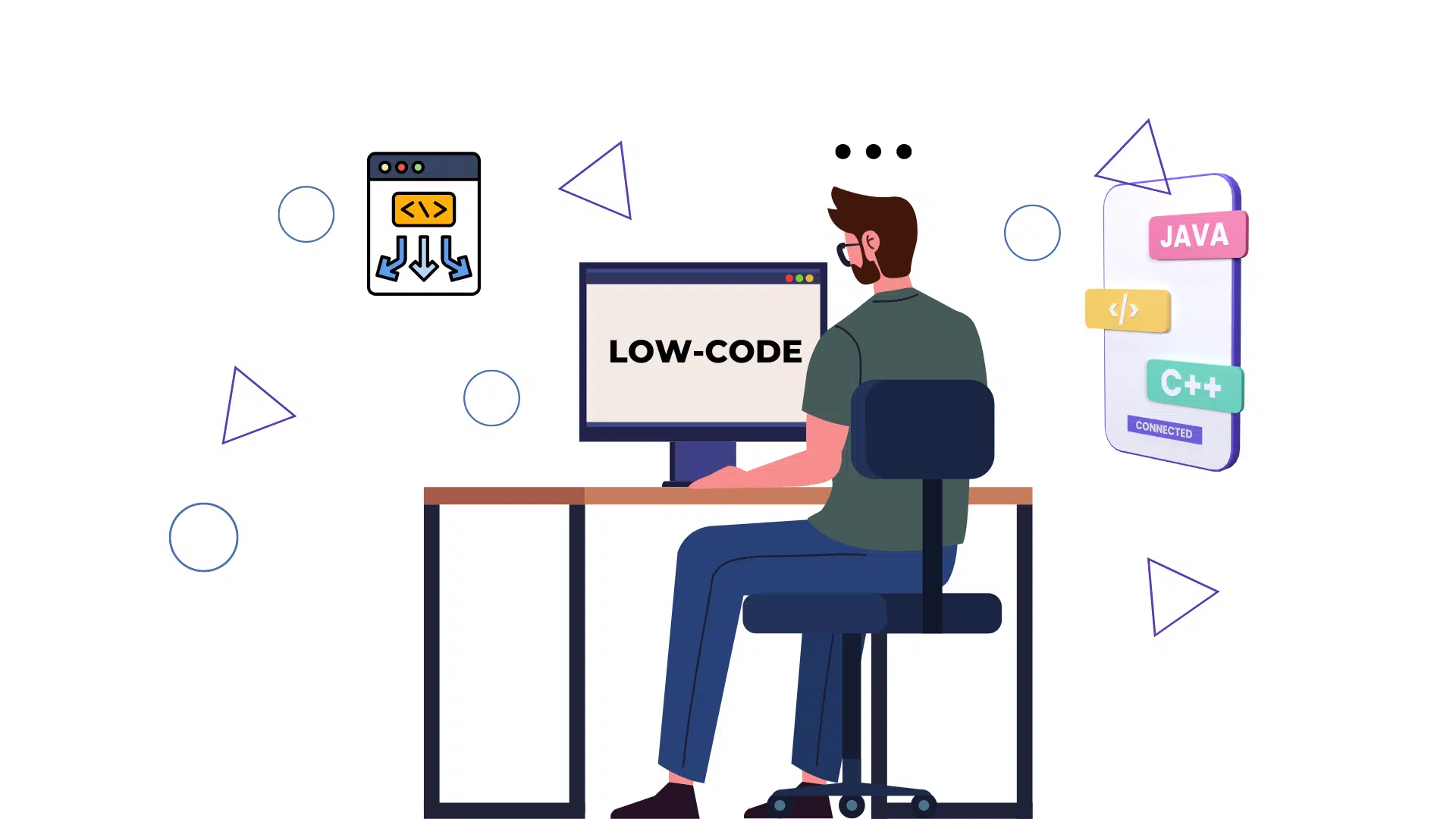Modern, innovative enterprises depend on applications and customized tech solutions to deliver a customer experience and drive business revenue. For instance, a recent study found that businesses using agile app development approaches report 30% faster project delivery times. However, many enterprises are unable to address niche pain points because they’re overwhelmed with IT challenges.
Table of Contents
Keeping up with a rapidly evolving technology atmosphere is expensive and associated with lagging. Legacy technology affects customer experiences, slows down your organization, and opens you up to security risks. So, how can your business keep moving forward with a shortage of skilled software developers? The solution is low-code citizen app development.
A low-code application platform, is a business model that allows professional and nonprofessional developers, including business users, to build and customize software apps with no or minimal coding techniques. A survey by Gartner1 stated that organizations will build 70 percent of their new applications using low-code or no-code platforms by 2025. It helps growth-oriented organizations to achieve goals, increase market share, and gain a competitive edge.
This blog will explore low-code app development and citizen developers more. Let’s dive deeper into how these platforms can revolutionize your app development process.
What is Low-Code Development?

Low-code development is an advanced paradigm of application development that reduces the levels of hand coding involved. It eliminates the need to write complex codes as a user just has to employ a simple interface that is, dragging and dropping in the environment to build applications. It opens up application development to even those who have never coded before and also professional coders without any regard to their level of proficiency in technology. Low-code development platforms (LCDPs) which are also known as quick application development tools (QADTs) allow users to employ a graphical user interface to create applications and services, simplifying and automating each stage in the life of the application. This approach speeds up the development cycle, encourages creativity, and allows non-exclusionary participation in the development of business applications. In many cases, low code development allows organizations to keep pace with the rising market demand and spearhead their digital transformation efforts.
The Rise of Citizen Development

One of the major developments in the low-code development space is the unprecedented rise of citizen development. Citizen development can be defined as a non-teaching audience also called as citizen developers creating apps and solutions with no or limited coding. Low Code platforms have enabled, without a fuss, to citizen developers, through visual development tools as well as drag and drop interfaces, the making of applications. This has opened up the development field to the business users who were previously seen as passive participants in their digital transformation projects. Therefore, such transformation can be made by organizations much more quickly, they enhance efficiency, and cut down the workload on the IT departments.
How Do Low-Code and Citizen Development Make App Development More Accessible?
The demand for business applications is growing faster than organizations’ capacity to deliver them. To stay afloat, businesses are seeking a low-code development platform. These apps are built outside the IT department, with half created by employees with little to no technical skills, reducing the barriers to citizen developers entering software development.
Low-code and citizen development reduce the barriers to entry in app development by offering citizen developers to create application software using visual tools and model-driven processes. Instead of traditional code-based programming, developers use a unified development platform’s pre-built components and drag-and-drop interfaces to build apps. For example, a mid-sized retail company used a low-code platform to create an inventory management app in just a few weeks, a task that would have taken months with traditional development. With such a framework, even a user fluent in evolving business needs without coding knowledge can participate in the development required. With lots of pre-built templates, developers can build and deliver low-code apps easily.
What Benefits Do Low-Code and Citizen Development Offer?
Development tools that derive their benefits from a low layer of abstraction are built to create solutions with little or no programming knowledge. Just like the way a toddler begins by segregating colored blocks, professionals, who have some basic understanding of programming, would use low code development platforms to bring their prototypes to life. They provide the following advantages to the developers:
- Efficiency: A low-code application platform provides the efficiency and agility necessary to modernize and accelerate app development. It offers comprehensive services and no backend complexity.For instance, companies using low-code have reported a 50% reduction in time spent on app development.
- Single code base: Enterprise low codeI offers a single code base for building apps, from progressive web apps (PWAs) to native mobile apps. It allows businesses to reach users wherever they live digitally across any device, even wearables and kiosks.
- No coding required: Basic coding knowledge is sufficient for anyone to build apps.
- Security: Low-code apps are easy to maintain and debug. They also easily handle app security, maintenance, and upgrades. Their easy development methods help you respond to changing opportunities and regulatory/compliance issues.
- Cost- Efficient: It’s cost-effective. By reducing reliance on expensive IT resources, leveraging prebuilt templates, and supporting multi-platform development, it lowers overall development costs.
How do low-code platforms with drag and drop interface facilitate app development for citizen developers?
Low-code application platforms are designed with both business users and professional developers in mind, making it possible to build applications without the need for extensive development or coding experience. These platforms offer self-service apps with existing, pre-built modules and elements. It allows citizen developers to create a working app click workflow. With drag-and-drop interfaces for function integration and built-in testing and debugging tools, identifying and fixing issues becomes a breeze. By leaving the coding portion to the platform, developers can offer businesses the ability to build their software solutions, automate repetitive tasks, improve operational efficiency, and achieve great ROI.
Additionally, Citizen developers can also handle variable workloads, such as adding more users to the apps as the organization grows, as these platforms offer scalability and agility. These platforms easily comply with security regulations and handle app security, maintenance, and upgrades. This flexibility is crucial for organizations facing fluctuating demands.
Conclusion
Low-code application platforms benefit from multi-device interoperability and allow citizen developers to build apps that adapt to all primary devices and platforms. Enterprise low code can be utilized on any device running key business processes. By mapping their requirements to product functions, customers receive the best possible experience.
Are you looking for a low-app development platform to meet your business needs? Build apps with HCL Volt MX and build innovative experiences for your customers, partners, and employees. It boosts productivity and developer experience through our AI-powered developer assistant and creates EX and remote work apps through simplified citizen development. Contact us today to explore how HCL Volt MX can empower your organization!

With more than 20 years of progressive experience as Program Manager and Project Manager had led complex IT projects/programs in a wide variety of industries in America, Latin America & Italia.
Mario Bisson Andini is an advanced Program Manager who is the founder of Bisson Training.















